It’s our second day in Blois and Susan and Simon from Days on the Claise have invited us to their local saffron fair. I know next to nothing about saffron except that it comes from the pistils ofcrocuses. Even that’s not right – it actually comes from the stigmas which are a part of the pistils.

The day’s not brilliant but at least it’s not raining. We’re amazed at the high water level in the fields as we get closer to Preuilly which is about an hour and a half from Blois through Montrichard and not far from Loches.
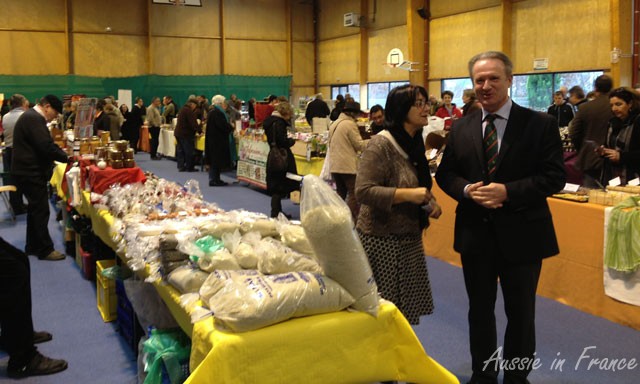
After inspecting Simon’s recent staircase varnishing job, we walk down to the gymnasium. Inside it’s all hustle and bustle with lots of gaily decorated stalls, not all selling saffron, I’m surprised to see, but then, there’s only so much saffron you can use in a year, isn’t there?
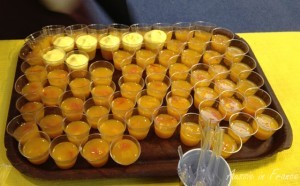
We pay for our saffron-themed lunch (18.50 euro) – Susan has already booked our table – and start sampling some little verrines but we can only remember one of them now: queen’s scallop in pumpkin soup flavoured with saffron.
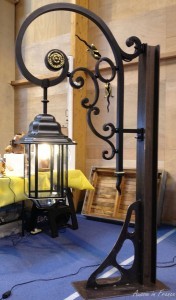
There are all sorts of goods on sale. The first stop is a wrought-iron craftsman. I wouldn’t mind having a lamp post like this one but it’s a little expensive …
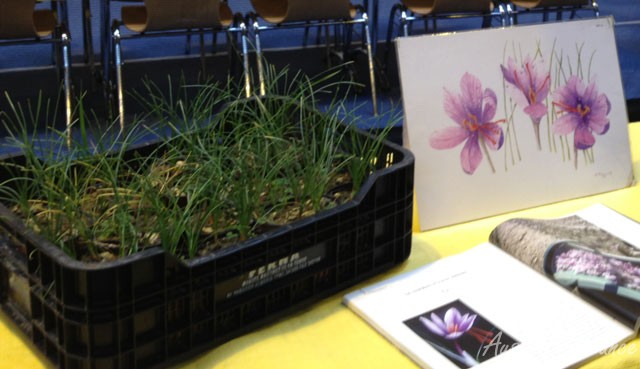
The next stand has some crocus plants on display. Although saffron crocuses have been cultivated in Touraine since the Middle Ages, no one really knows where they come from. Some think Tibet. You need 150 to 200 flowers to obtain 1 gram of saffron which explains why you should never buy powdered saffron – it’s probably something else altogether!
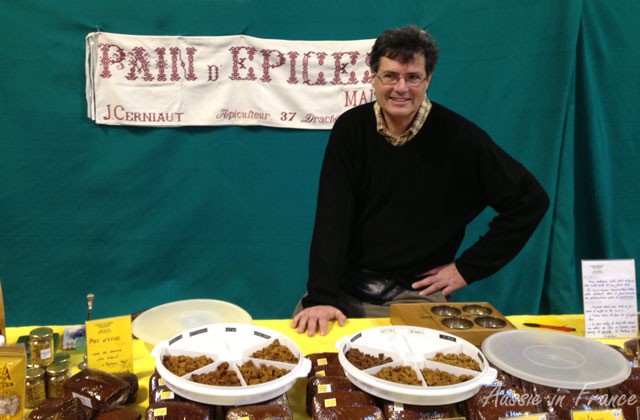
Several stands are selling pain d’épices flavoured with saffron. I learn that you always infuse the stigmas in a liquid such as water, milk, cream and wine and add them at the end of the cooking time. Too high a heat destroys the aromatic molecules.

Another lady is selling unusual fruit and vegetable seeds so I buy some tubers called mashua (tropaeolum tuberosum) that were already being served up 5500 years in South America. I’ll let you know how they turn out!
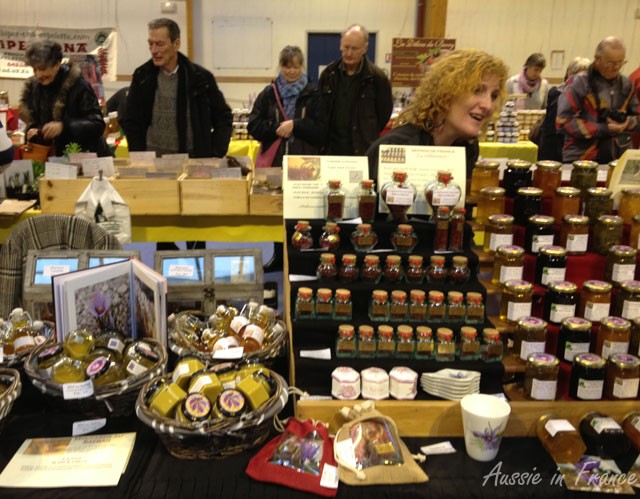
Next stop is a stand selling little bottles of saffron-flavoured vinegar, honey, jam, etc. I buy a few to keep as gifts and am given a neat little jute carry bag.
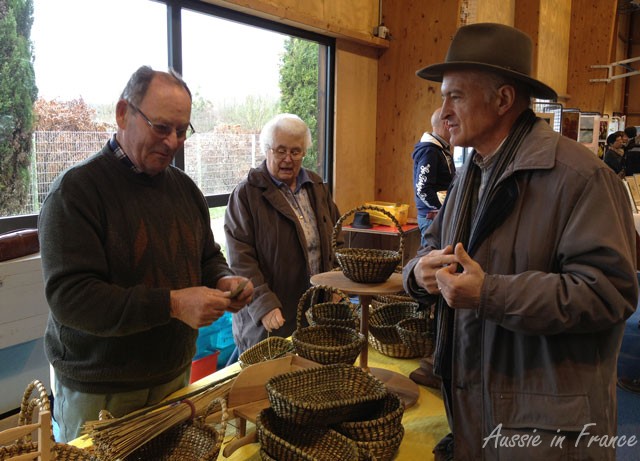
We are intrigued by a man selling baskets that he makes using local rushes and brambles. They start out green and gradually become brown. The basket-maker explains that it’s a pensioner’s hobby and that he only sells the baskets to make room for more. At 10 euro a basket, it’s a bargain. They are all beautifully finished. I choose one that turns out to be exactly the right size for our local pain aux céréales.
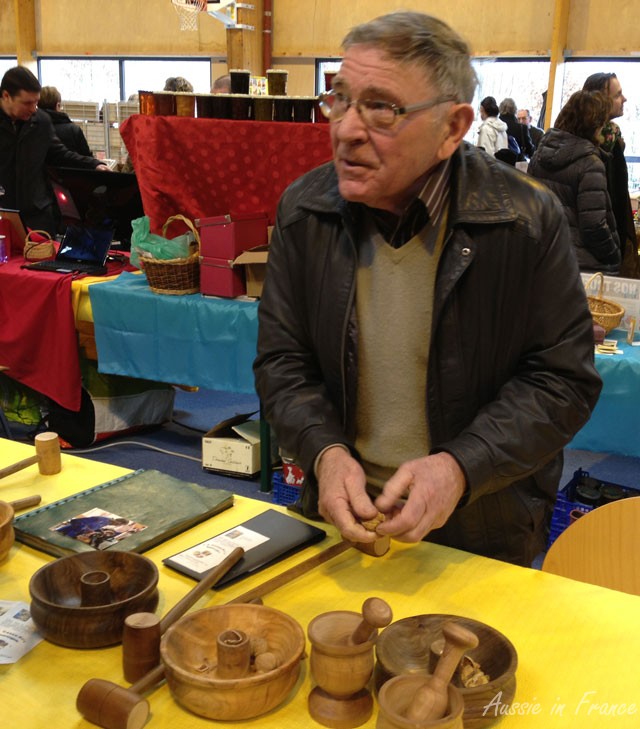
Another man is selling the same type of nutcracker we have at home that I think is perfectly useless so I get him to demonstrate. Obviously I’ve been using the wrong technique. I can’t wait to get back to Paris to see if I can crack perfect nuts without putting the shells all over the kitchen.
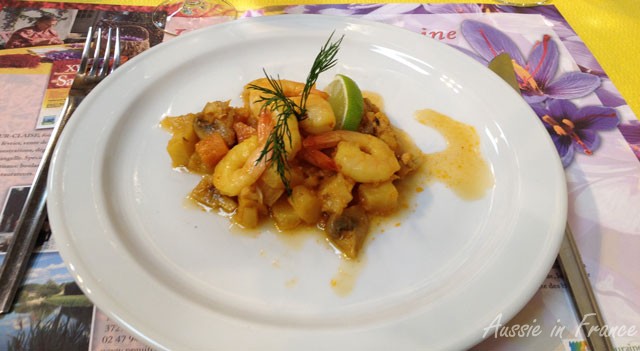
By now it’s lunchtime and my feet are killing me so we make our way to the dining area. We have a prawn-based entrée with saffron (which is often used to accompany mussels, scallops and fish), followed by guinea-fowl and saffron cream sauce.
Dessert is a local saffron-flavoured version of tiramisu which is one of my very favourite desserts. We choose a local crémant followed by a local sauvignon.
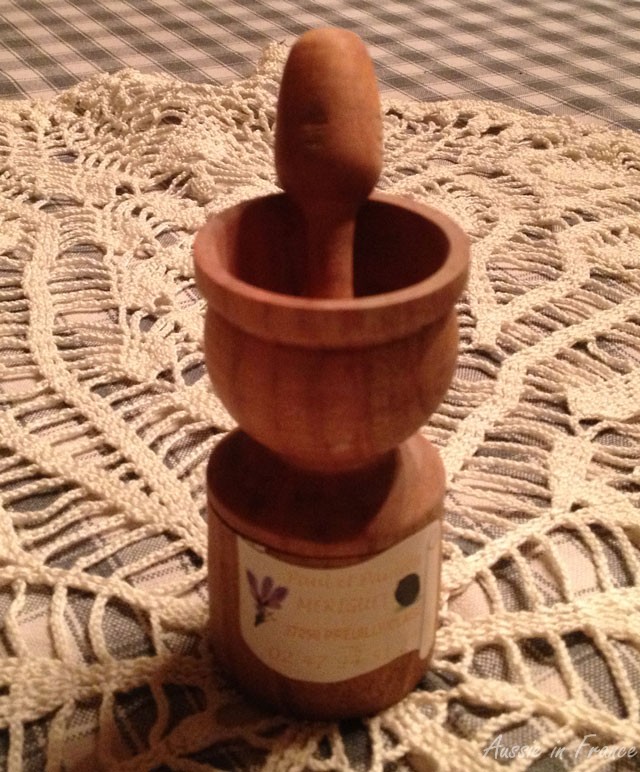
We don’t buy any saffron at the fair because Susan gives me a special little saffron container with a mortar and pestle on top made by friends in Preuilly. Jean Michel has picked up various brochures along the way, many of which contain saffron recipes. Since tomorrow is a fast day, I’m going to try an omelette au saffran.



